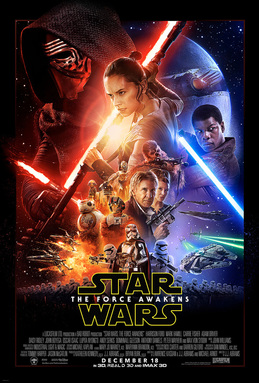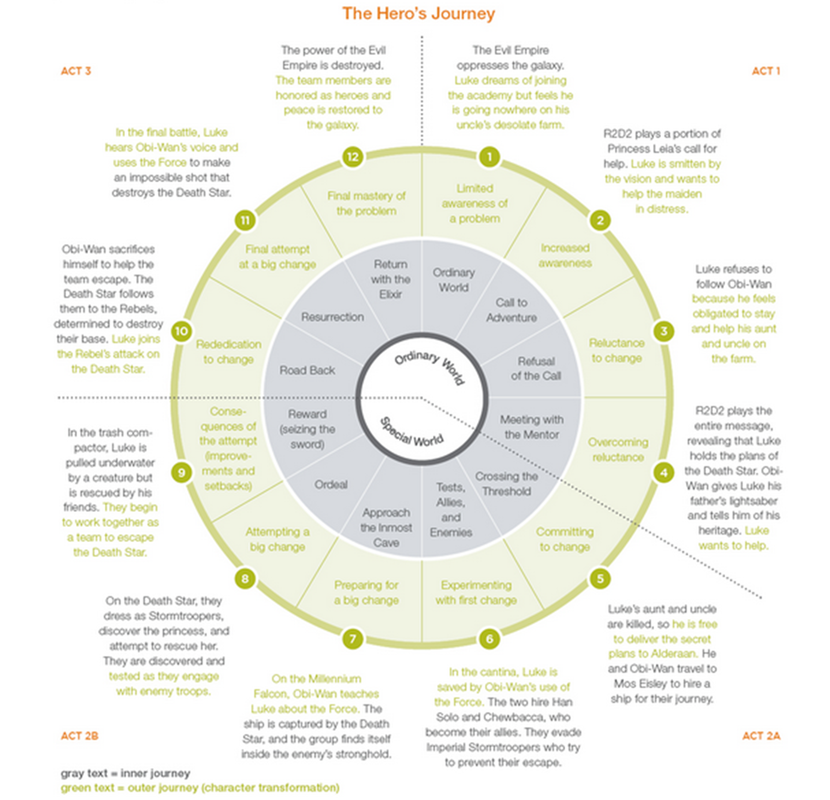
There have been a number of articles written about what makes Star Wars such a cultural phenomenon—and many characteristics that led to the success of the films are also relevant to alumni relations and annual giving. Here are some general lessons for higher-ed fundraisers:
1. Focus on great storytelling.Before Lucas made Star Wars, most sci-fi movies relied heavily on whatever the most modern special effects happened to be. Yes, Star Wars has its fair share of special effects—but it doesn’t rely on the effects to wow the audience. Lucas made sure the movies each had an engaging story arc that kept viewers enrapt throughout. The stories follow the same general arc as many Greek myths and childhood fables.
At its core, fundraising is about storytelling. Most of our alumni and donors already believe in our mission, but we need to capture their hearts. For annual giving shops, we can often benefit from stepping back and looking at how we are telling our story. Is there an effective arc to our stories that we tell, especially those where we utilize video? Do we have any tension in our stories that helps emphasize why a gift is needed?
2. Follow the path of the hero’s journey.One aspect of Lucas’ storytelling that helped set Star Wars apart was its focus on the “hero’s journey.” The hero’s journey is a term used to describe what mythologist Joseph Campbell proposed in his book, Hero with a Thousand Faces. Campbell theorized that most traditional myths from around the world all follow a similar path, which Lucas based his stories off of.
When it comes to writing great copy for an email or creating a narrative for a scholarship/fellowship video, Campbell’s hero’s journey provides an excellent approach. Not every step is necessary, but many are very relevant to higher-ed fundraising. Nancy Duarte, in her book Resonate, mapped out the following steps of the hero’s journey as it relates to Star Wars:
The Ordinary World: What was the student doing prior to coming to your school?
Call to Adventure: How did receiving a scholarship open up paths unbeknownst to the student beforehand?
Refusal of the Call: Did the student have any reservations? Were they intimidated to take the next step in their journey? Did they feel they were not worthy of the philanthropy?
Meeting with the Mentor: What professor influenced the student and helped the student grow?
Crossing the Threshold: What activity really allowed the student to begin to reach their potential?
Tests, Allies, and Enemies: What challenges did the student meet? Who helped them?
Approach the Inmost Cave: When was the road toughest for the student?
Ordeal: How did the student meet this larger challenge?
Reward (seizing the sword): What was the result of attempting to solve the larger challenge?
The Road Back: How did reaching this challenge affect the student’s vision of their future career path/vocation?
Resurrection: What is the student’s new path?
Return with the Elixir: This is the unknown part of the higher-ed story. We won’t know the ending for a student story, but the scholarship should hopefully give the student the means to reach the happy ending.
Brigham Young University’s School of Music has a great video, called Aubrey’s story, which illustrates how utilizing an effective story arc creates a powerful and compelling video demonstrating why scholarships are vital not just to a university, but also to an individual.
3. Leave something to the imagination.In the first three movies created by Lucas, there are many references to actions that are never seen in the movie (e.g., Princess Leia refers to the “Clone Wars,” Han Solo talks about the famed Kessel Run, Episodes IV and VI both refer to spy activities to gather data on the Death Star). It feels like you’re jumping right into the middle of an ongoing story; Lucas assumes that you’ll focus on the story at hand and don’t need to be informed of everything.
For annual giving, how much backstory are we providing? Do we need to provide information on famous landmarks, how expensive tuition is, or why scholarships are needed every time we send out a solicitation? If we focus less on this information, we’ll have more time to spend on telling compelling stories about current students and how their student experiences are benefitting greater mankind. Our donors are already knowledgeable about our institutions; they don’t always need the backstory.
4. Love your fan base.Not only have Star Wars and Lucasfilm created an immersive universe, but they have also embraced their fans by responding to fan mail and hosting fan fests. The company is active on social media to keep their fans excited even though there hasn’t been a new movie in 10 years. Who are your biggest fans? What do you do to keep them excited about their alma mater, even when there isn’t much happening?
5. Show what your reality is really like.Most sci-fi films from the 50s and 60s depicted the future as shiny and bright. But Star Warsflipped the script, showing a future that was dirty, “lived in,” and often far from perfect. In higher ed, even when asking for donations, we still depict our college or university as ideal. But do we need to be afraid to show the rough edges? If financial aid or a new departmental building is an urgent need, it’s best to get right out there and state it instead of dancing around the issue or being afraid to show areas of weakness within your institution.
There are often lessons to be learned from successful brands around the world, and Star Wars provides a great blueprint for how to correspond with our alumni and donors. Not that we all need to be thinking about fundraising while at the movie theater!



 RSS Feed
RSS Feed
